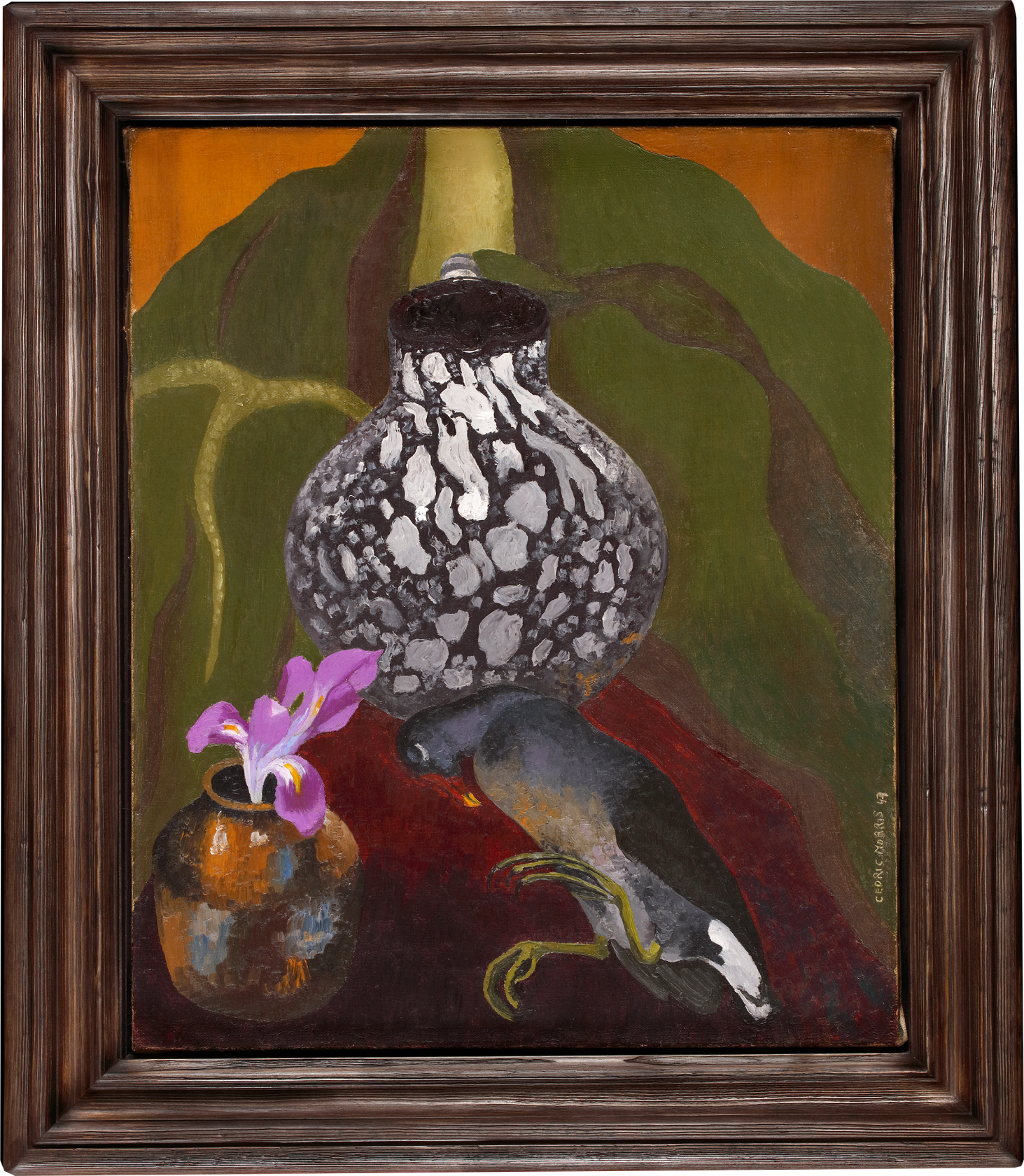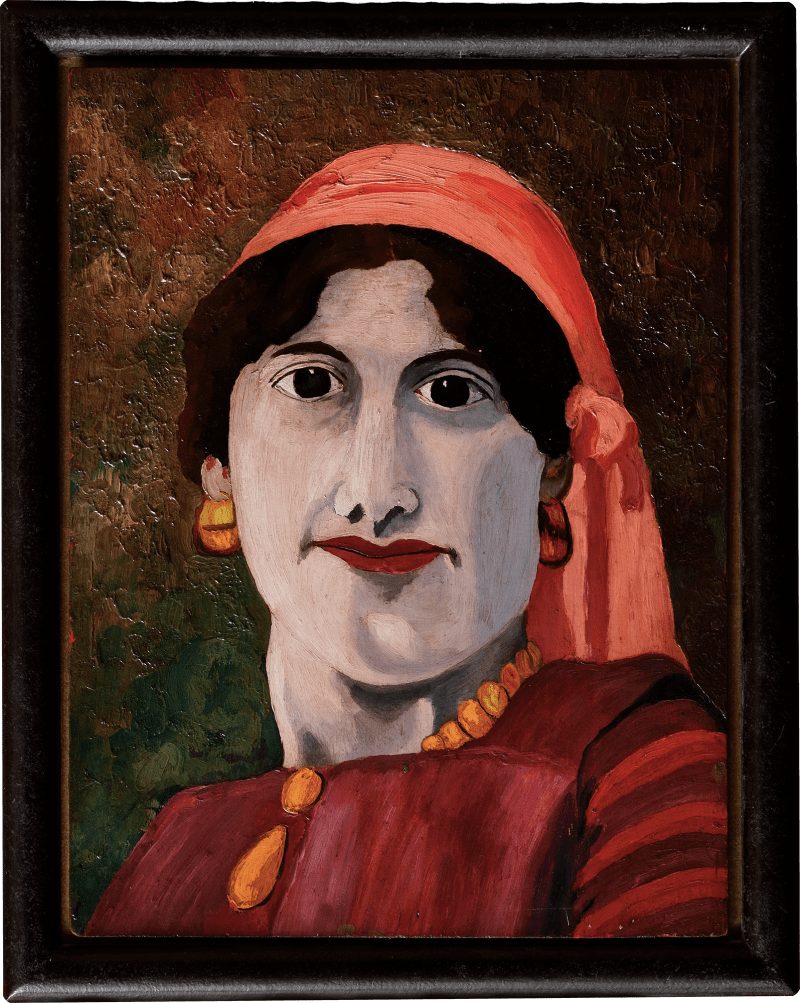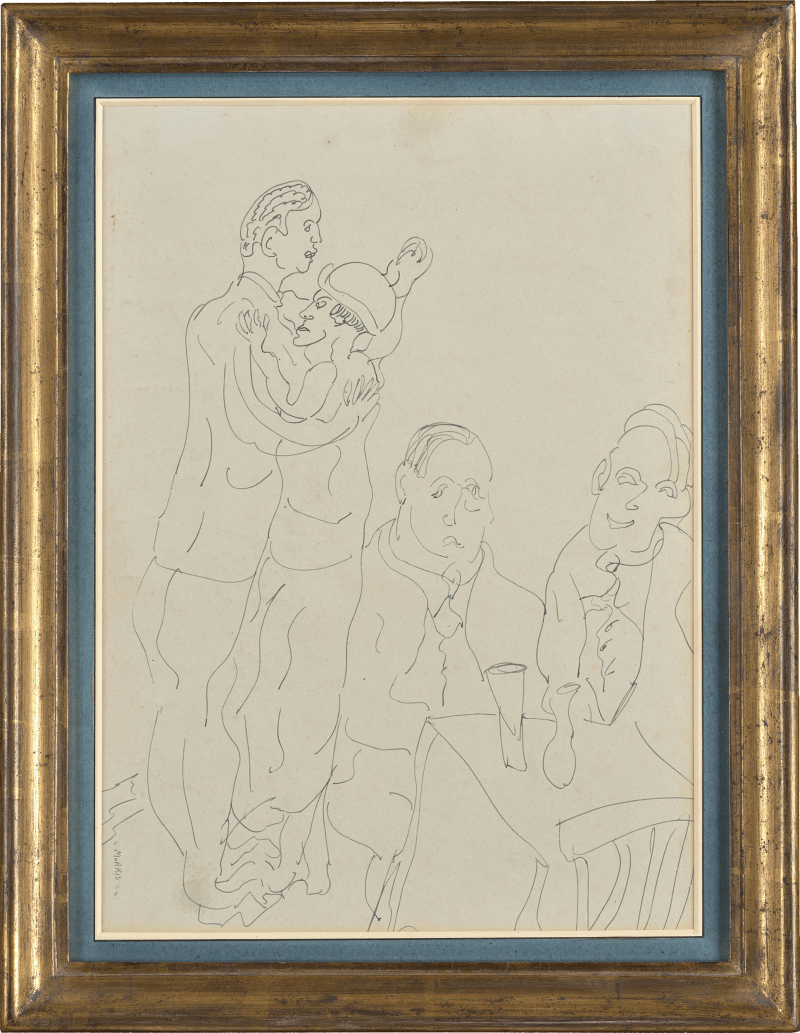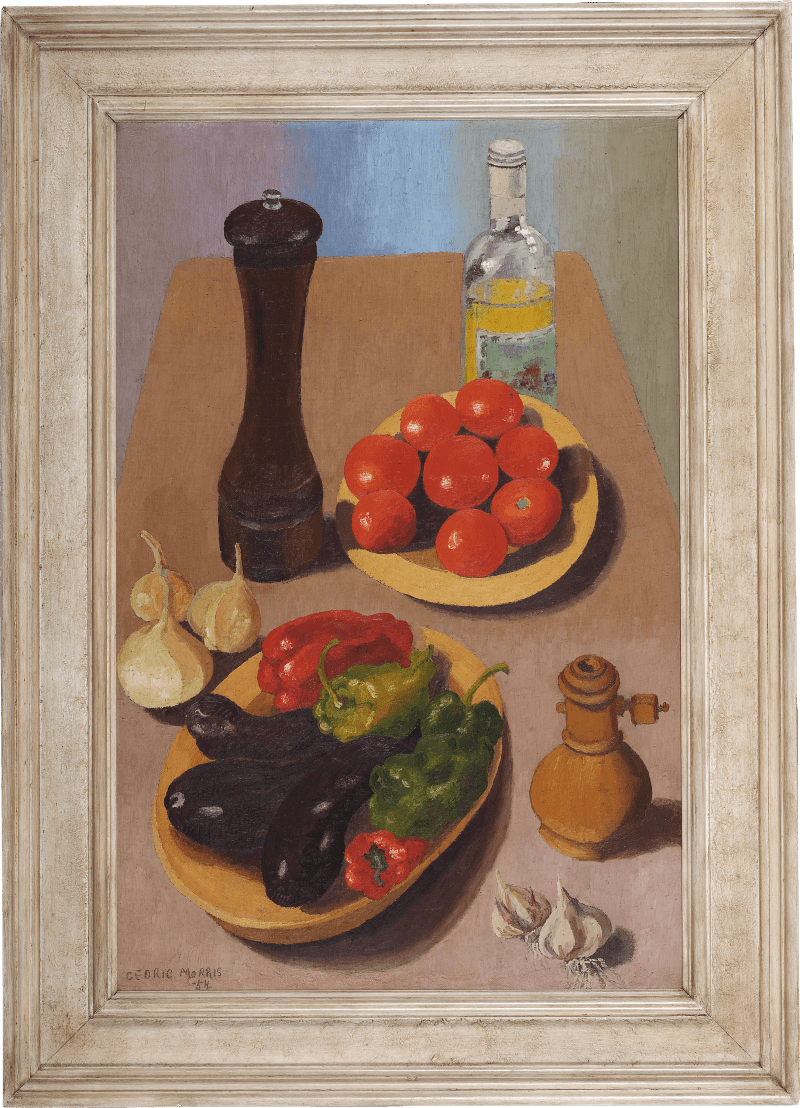This stylised still life depicts a central Nailsea jug behind a single purple iris and a dead moorhen. Characteristically, Cedric Morris has rendered the subject in the foreground with honest directness. Encompassing the entire composition is a bold, green, abstract execution of an oversized cabbage leaf.
The depiction of dead birds is a subject to which Morris returned throughout his career. The present work predates his celebrated painting Landscape of Shame (c.1960, Tate) which depicts a mass of dead or dying birds on an open landscape. Landscape of Shame is likely a wry condemnation by Morris on the ill effects of pesticides, which were first noticed in the mid-1950s. Although this painting predates the widespread controversy surrounding the destructive impact of certain pesticides and crop sprays on the British bird population, which came to the fore in the mid-1950s, Morris’ unfailing dedication to the natural world is palpable in this work.
By this date, Morris had become renowned for...
This stylised still life depicts a central Nailsea jug behind a single purple iris and a dead moorhen. Characteristically, Cedric Morris has rendered the subject in the foreground with honest directness. Encompassing the entire composition is a bold, green, abstract execution of an oversized cabbage leaf.
The depiction of dead birds is a subject to which Morris returned throughout his career. The present work predates his celebrated painting Landscape of Shame (c.1960, Tate) which depicts a mass of dead or dying birds on an open landscape. Landscape of Shame is likely a wry condemnation by Morris on the ill effects of pesticides, which were first noticed in the mid-1950s. Although this painting predates the widespread controversy surrounding the destructive impact of certain pesticides and crop sprays on the British bird population, which came to the fore in the mid-1950s, Morris’ unfailing dedication to the natural world is palpable in this work.
By this date, Morris had become renowned for breeding his famed irises and whether painting or breeding them, irises were Morris’s forte. He gained considerable respect as an award-winning breeder, formally registering around forty-five different species and naming about ninety. Some of the better-known irises cultivated by Morris include the ‘Benton Menace’, named after his cat, and the ‘Benton Rubeo’, named after his pet macaw.
Cedric Morris’s lifelong fascination with birds, nature, and wildlife is evident in the present work. The purple iris in the foreground is juxtaposed with the dead moorhen which together form a visual representation of the transition between life and death.
This work was owned by the Welsh painter Esther Grainger, who loaned it to Morris's 1968 retrospective at the National Museum of Wales in Cardiff.













